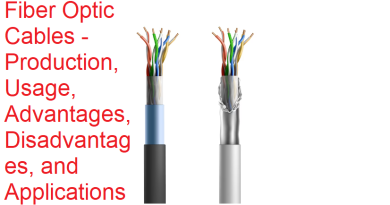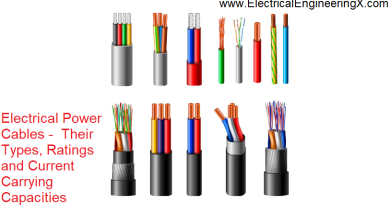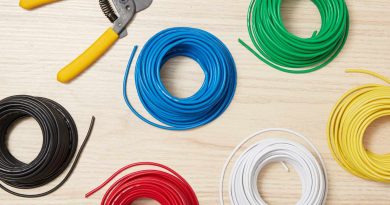Testing of Electrical Power Cables – Tests used for Cables Inspection
Testing of Electrical Power Cables? What types of Tests are used for Electrical Power Cables, and How are they performed
Introduction
Testing power cables thoroughly ensures safe, reliable, and optimal performance over their service lifespan. Let’s explore the significance of different types, from material qualification to commissioning and condition monitoring, test methods, equipment used, and the importance of following cable testing standards.
Importance of Testing Power Cables
Testing is critical for:
- Verifying cable construction, materials, and design meet specifications
- Ensuring cables withstand operating stresses without failure
- Confirming installation is proper prior to commissioning
- Preventing hazards or outages from undetected defects
- Monitoring insulation conditions and proactively identifying defects
Objectives of Cable Testing
- Validate cable design ratings like voltage withstands, temperature, etc.
- Detect defects from manufacturing like insulation voids
- Check for any damage during transport or installation
- Determine successful installation and splice cures before energization
- Periodically monitor cable health and insulation condition
Cable Testing Standards
IEC, IEEE, etc., provide standards for testing methodologies, procedures, acceptance criteria, intervals, and reporting.
Design and materials require extensive evaluation:
Design and Material Evaluation Tests
Sample Preconditioning
Accelerated sample aging to simulate years of exposure for evaluating long-term performance.
Construction Examination
Detailed dissection to verify design elements like a conductor, insulation, shields, etc.
Dimensions and Weights
Checking for consistency across production lengths and compliance with specifications.
Electrical Properties
Testing factors like dielectric strength, resistivity, dielectric constant, etc. determine functionality.
Factory testing ensures quality:
Factory Acceptance Tests on Cables
Conductor Resistance Test
Measuring DC resistance to detect any abnormalities in conductors like opens.
High Voltage Test
Applied AC and DC overvoltages to verify insulation can withstand expected voltages.
Insulation Resistance Test
Megohm testing to measure leakage current across insulation and identify defects.
Capacitance Test
Checking capacitance between conductors and across insulation to identify inconsistencies.
Non-Destructive Testing
Partial Discharge Testing
Partial discharge testing detects tiny electrical discharges within the insulation, which can be indicative of insulation defects. Early detection can prevent catastrophic failures.
Tan Delta Testing
Tan delta testing evaluates the dielectric properties of cables. It helps identify aging or damaged cables by measuring the dissipation factor of the insulation.
Installations require thorough commissioning:
Installation and Commissioning Tests
Visual Inspection
Checking for physical damage, proper terminations, grounding, fireproofing etc.
Continuity Testing
Verifying complete end-to-end conductor and shield continuity.
Insulation Testing
Measuring insulation resistance after installation to detect faults.
DC High Voltage Testing
DC hi-pot testing to confirm insulation integrity prior to energization.
Sheath Integrity Testing
Checking metallic sheath/shield grounding bonds is proper.

Precise fault locating methods help repairs:
Cable Fault Location Testing
Pulse Reflection Method
Analyzing pulse reflections and time delays to pinpoint fault distances in cables.
Time Domain Reflectometry
Using TDR instruments to identify cable faults based on reflected waveforms.
Thumper Method
Generating noise impulses and sensing at various locations to determine fault.
Loss Measurement Method
Calculating fault distance by measuring cable losses at different frequencies.
Periodic maintenance and monitoring is key:
Maintenance and Condition Monitoring
Partial Discharge Monitoring
Detecting corona or arcing to locate defects and deterioration.
Tan Delta Testing
Measuring dielectric losses to assess insulation condition.
Offline Withstand Testing
Applying high DC voltages periodically to determine deterioration.
Online Monitoring
Continuously monitoring parameters like partial discharge, tan delta, etc., to identify issues.
Specialized equipment performs testing:
Key Test Equipment Used
Hipot Test Sets
Apply AC and DC overvoltages for withstand and leakage current testing.
Megohmmeters
Used for insulation resistance measurement at various voltages.
LCR Meters
Measure capacitance and associated losses in cable insulation.
TDR Instruments
Emit signal pulses and analyze reflections to locate faults in cables.
Partial Discharge Monitors
Use mounted sensors to detect corona discharge and arcing to locate defects.
Benefits arise from comprehensive testing practices:
Advantages of Comprehensive Testing
- Ensures cables consistently meet design and operational expectations
- Reduces probability of failure through rigorous quality control
- Confirms integrity of installation before costly energization
- Maximizes cable lifespan through condition monitoring
- Lowers risks of outages that disrupt critical operations
But certain limitations exist:
Limitations of Cable Testing
- Cannot guarantee zero defects or total predictability of lifespan
- Standards specify minimum recommended tests only
- Full testing can be time-consuming and expensive
- Accessibility constraints for installed cables
- Complex analysis is needed for some monitoring methods
Following standards provide reliability:
Importance of Adhering to Standards
- Ensures uniformly acceptable quality across manufacturers
- Minimum testing levels based on historical field data
- Specifies proven methodologies and their limitations
- Provides standard frameworks for data analysis and interpretation
- Facilitates audibility through standardized reporting
Summary
Comprehensively testing power cables throughout their lifespan using the appropriate type, methodology, and equipment per international standards is crucial for performance. While thorough testing promotes quality and reliability, practical challenges remain regarding installed cable access and monitoring ambiguities. Continued advancements in condition monitoring and fault diagnosis technology will further aid proactive cable maintenance.
FAQs
- Why is testing essential for power cables?
Testing verifies design specs are met, detects defects early, and ensures installation readiness, maximizing cable lifespan and reliability.
- What are the main types of cable testing?
Major forms are design evaluation, factory acceptance, installation commissioning, fault location, and condition monitoring and maintenance testing.
- What parameters are tested during cable commissioning?
Critical commissioning tests check continuity, insulation condition, proper terminations, and grounding and withstand using DC high voltage tests.
- How are cable faults precisely located?
Main methods used are pulse reflection, time domain reflectometry, and loss measurement to determine fault position accurately.
- What does partial discharge monitoring in cables involve?
It involves detecting corona activity signaling insulation degradation before failure using mounted sensors on cables.
- What acceptance tests are performed at factories?
Key factory tests are conductor resistance, high AC and DC voltages, insulation resistance, and capacitance.
- How does cable testing ensure safety?
Rigorous voltage withstands, and breakdown testing ensures cables will not fail in service and harm personnel or assets.
- What are some limitations of cable testing?
Limitations include accessibility issues, time requirements, costs involved, and difficulty in completely predicting lifespan.
- What equipment is typically utilized for testing cables?
Common equipment includes hipot testers, megohmmeters, LCR meters, TDRs, and partial discharge sensors.
- How do standards aid cable testing practices?
Standards help define proven, uniform methods and minimum recommended testing levels for quality and reliability.
MCQs
- What is the purpose of testing electrical power cables?
- The purpose of testing electrical power cables is to ensure their safety, reliability, and longevity.
- Are all cable tests performed during installation?
- No, cable tests are conducted at various stages, including installation, commissioning, periodic maintenance, and in response to suspected faults.
- How often should periodic maintenance testing be conducted?
- The frequency of periodic maintenance testing depends on factors such as cable age, location, and criticality, and should be determined based on a risk assessment.
- What are some common issues detected through cable testing?
- Common issues detected through cable testing include insulation breakdowns, damaged conductors, sheath breaches, and hotspots.
- Can cable testing help prevent electrical accidents?
- Yes, cable testing can identify potential hazards and prevent electrical accidents by addressing issues before they escalate.
- What is the significance of dielectric strength testing?
- Dielectric strength testing ensures cables can withstand high voltages without breaking down, enhancing their safety and reliability.
- Are there specialized tests for underground power cables?
- Yes, there are specialized tests for underground power cables to assess their condition without excavation.
- How do environmental factors affect cable testing?
- Environmental factors such as temperature and humidity can impact the accuracy of cable test results and should be considered during testing.
- Is thermal imaging effective in identifying cable faults?
- Yes, thermal imaging is effective in identifying cable faults by detecting hotspots that may indicate issues.
- Can testing extend the lifespan of aging cables?
- Yes, regular testing can help identify and address issues in aging cables, potentially extending their lifespan.




